
|   |

|   |
 e-mail: sunilkothari1933@gmail.com In praise of Guru Bipin Singh Photos courtesy: Darshana Jhaveri August 30, 2017 Manipuri Nartanalaya celebrated the birth centenary of Guru Bipin Singh in Kolkata. On the occasion of his 100th birthday celebrations, we pay tribute to the great visionary. 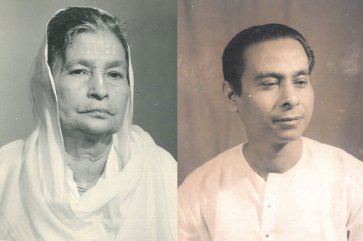 Guru Bipin Singh’s mother Indubala Devi 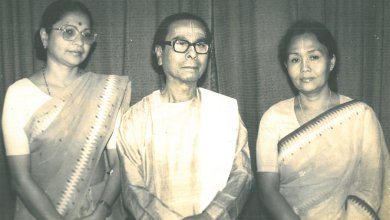 Guru Bipin Singh with senior most disciples Darshana Jhaveri and Kalavati Devi Soon after the All India Dance seminar in April 1958 at Vigyan Bhavan, convened by Sangeet Natak Akademi, where I had seen Guru Bipin Singh's presentation of Manipuri dances with the Jhaveri sisters, establishing it as a classical dance form, I got an opportunity to visit Manipur with a research team of Devi Lal Samar's Bharatiya Lok Kala Mandal, Udaipur. What Guru Bipin Singh had told me all came true when I visited Imphal. It was fortunately for us Kartiki Purnima, with full moon night. We saw a big crowd of Manipuri female dancers dressed in typical Manipuri costumes going to Shri Shri Govindji's temple to perform Maharasa. Indeed it was a sight for the gods! The devotional atmosphere transported us to another world. During our visit we got an opportunity to see the daily lives of the Meitei people. Way back in 1958, not many of us had ever been to Manipur. As an up and coming scholar, I was thrilled to visit Manipur. Guruji had told me that on all occasions dance takes place there. And we could see some of these events, a wedding, and an after-death shraddha ceremony when devotees sang and danced, and of course we could meet the great traditional gurus Amubi Singh, Amudon Sharma and others as Jawaharlal Nehru Manipuri Dance Academy had recently been established. We saw several performances of Pung Cholom, Kartal Cholom, Khubak Ishai, Natasankritan, a staggering variety of dances and also martial art Thang Ta. Geographically bound on one side by the Indo-Burma border and on the other by the Assam Hills, Manipur has for centuries preserved and nurtured its own distinct dance and music traditions. There is no occasion during which dance and music are not part of life in Manipur. Right from the birth of a child, the piercing of the ears, the sacred thread ceremony, marriage, death, after-death ceremonies- all the major states of life are celebrated with dance and music. Nowhere in India are dance and music so closely interwoven with rituals and religious practice. One rarely comes across any Manipuri-Meitei, who does not know dance and music. In Manipur, before the advent of Vaishnavism, the Manipuri people had their own indigenous religious belief system. Even after the spread of Vaishnavism from Bengal the earlier religious beliefs and practices still prevail and are a part of their life. The visit left an indelible impression. After that first visit, there were many occasions to visit Manipur when I joined Rabindra Bharati University at Kolkata in 1980. By fortuitous circumstances, I stayed with Guru Bipin Singh and his wife Kalavati Devi. At that time, Guruji's disciple Darshana Jhaveri was also staying with Guruji for further studies and research in Manipuri dances. Staying with Guruji was a great blessing. From close quarters, I could see his work, compositions, choreography, how he taught several young dancers at home - among them two bright dancers Priti Patel and Sruti Banerjee. From early morning, the home resounded with sound of pung, the Manipuri drum. Discussions continued about technique, tala, swaras, swara prastara, songs from different texts, co-relation with Natyashastra and other texts. 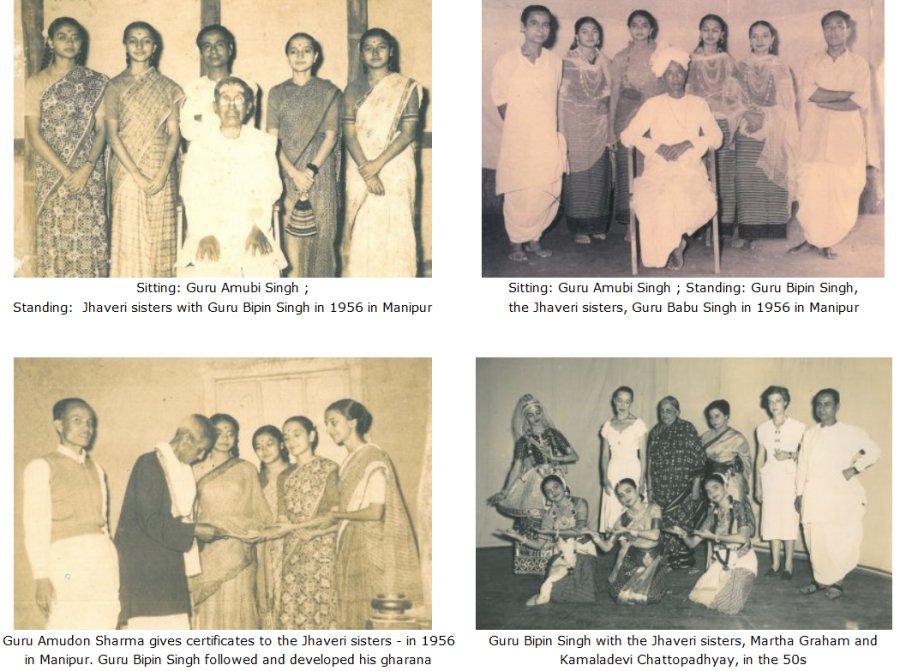 I had known Guruji from early 50s when I had started researches in dance. In Mumbai, in those years Manipuri dances were performed by the Jhaveri Sisters and one was exposed to Guruji's work in Manipuri to make it stage worthy for urban audiences from traditional night long performances, retaining core of tradition and yet make them accessible to metropolitan audiences. Therefore, when I saw Maharasa and other Rasalilas at Imphal, I could see what Guruji was doing in terms of editing. His constant endeavour was to see that Manipuri was not a folk dance form, as it was earlier believed. It had strong shastric base and shared several elements of Natyashastra even in the seating arrangements of the chief person during Maharasa. Guruji hailed from Cachar and went to Manipur to study from several gurus, the mnemonic syllables, the various compositions, the playing of pung, documenting oral tradition. The deep interest and ability to inquire into shastric aspect of Manipur has been the outstanding contribution of Guru Bipin Singh. As his disciples, the Jhaveri Sisters are very fortunate to have worked together with him. A lifelong relationship of Guru Shishya helped the disciples to showcase Guruji's creative work, researches in talas and their application in compositions he created or the various solos, duets, group dances he choreographed over the years besides dance dramas. I could see that Guruji was able to substantiate his work with shastric evidences, erudition, scholarship and creative innovations within traditional format. His brief compositions, all based on traditional Manipuri dances were chiseled like diamonds and gems. From night long dance dramas, the uparupakas- the Raslilas, Guruji culled the essence of Manipuri with imagination and sensitivity captured in his choreography of brief duration, the key events and incidents that city audiences can relish in the changing times. He created works of lasting beauty. Whether it is Basanata rasa or Holika Krida, Maha rasa, Nitya rasa, he has lent a special touch to all of them. When one looks at the references to Pindibandhas in the Natyashastra, one comes across four varieties of Pindis: Shrinkhalika (chain formation), Latabandha (creeper like formation), Gulma (cluster), and Bhedyaka (centrifugal) in which regular dancing is performed. When one sees in Rasalilas, the Gopis placing their arms on the shoulders of the Gopis standing nearby, one will see the Shrinkhalika and Latabandha formations; when they come together to fill in pichkaris in Basanta rasa, they form cluster - Gulma - and when they dance moving away, Bhedyaka formation is seen. The imaginative use of Pindibandhas Guruji has made in Rasalilas is evident of his thorough study of the Natyashastra, its continuity in present day performances and in creating novel choreographic works. Or take his compositions in Swaraprabandha based on two major elements of Swaras and Talas. For instance, the Swaras sung in raga Bhopali and tala Khuji of 16 beats and 7 stresses having unusual divisions, maintaining system of ragas in the Rasalila, commencing with Mridanga raga, then raga alapa in raga Bhopali followed by its Dhyanamurti and then describing the beauty of Lalita dedicating her dance in praise of Lord Krishna and Radha, he has created composition of perfect beauty wherein a dancer brings the swaras, the musical notes to life through delicate body movements in pure dance in the lasya mode of Manipuri. Or take Tanum. It is a kind of Gitaprabandha having mainly elements of particular types of syllables, composed of Rajmel tala of 7 beats and 1 stress. It is followed by Tanchap tala of 4 beats and 1 stress.It signified the serene and dignified tandava movements of Lord Krishna. Sung traditionally as a song in Natapala and Nityarasa, Tanum has been created as a dance number which has roots in the larger corpus of the Rasalilas. Take Guruji's composition of sahitya like Anangakshepa, wherein Radha requests Ananga -Kamadeva - not to mistake her for Lord Shiva on account of illusion created by her various ornaments. Rich imageries are sought by Guruji to highlight the alankaras and chamatkaras of the rich poetry. The Manipuris are followers of Gaudiya Vaishnavism, the devotional cult advocated by Chaitanya Mahaprabhu. Vaishnavaite scholars have divided shringara rasa in two major divisions: Sambhoga (union) and Vipralambha (separation). Each of these divisions are further divided into 32, totaling 64 sub-divisions. The composition of Anangakshepa belongs to one of the subdivisions of Vipralambha shringara. Radha pleads to Kamadeva not to burn her. “My long hairs are not stresses of Lord Shiva, or the flower garland on my hair, the river Ganga. The pearl ornaments on my head are not the crescent moon, or the kumkum on my forehead the third eye. Mistake not the paste on my neck as poison in the neck or the pearl necklaces as serpents.” 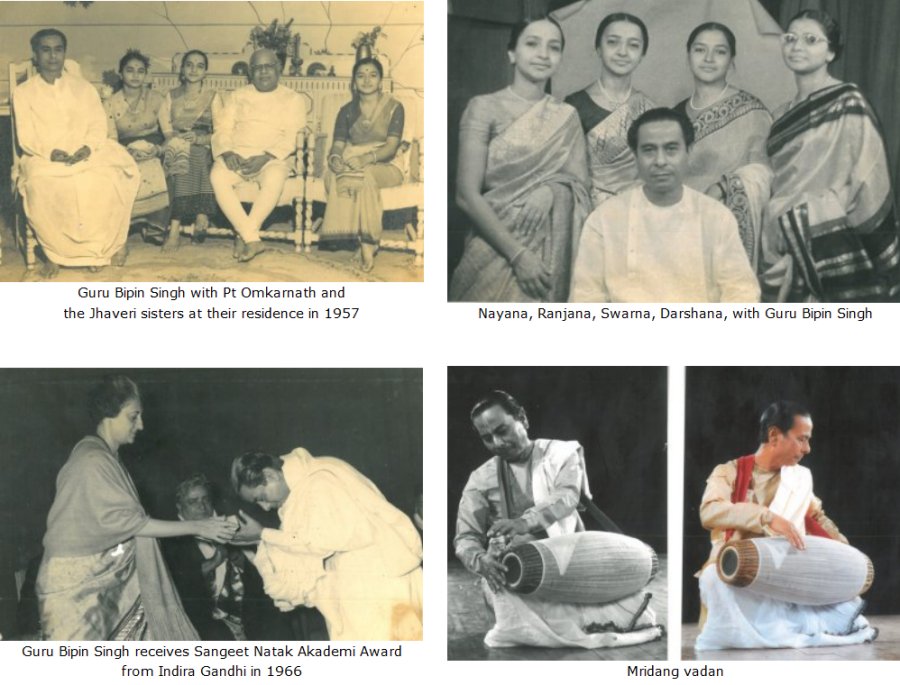 I had seen him poring over them, correlating the textual evidences with practice day in and day out. It was a lifelong passion to research into the tradition that has been surviving all over India and known as classical. His emphasis on the classical aspect of Manipuri dancing has been his major contribution. And also the ability to give solo numbers like one sees in Bharatanatyam, Kathak and Odissi. If today in Manipur we see annual solo dance festivals, Guruji's contribution to it must be considered as a major one. Not that in Rasalilas there are no solo pieces. But to specially compose them for presentation in a concert programme has been his innovation which his disciples, the Jhaveri Sisters, have carried on so successfully. Guruji has looked at the tradition of Manipuri dancing from various angles. If there are two specific aspects of tandava and lasya, the vigorous and the gentle, he has composed dance items as Mridu Uddhata Krishna Nartana or two dancers performing simultaneously, one performing the tandava and the other lasya. So varied and rich has been his choreographic output that every time I have seen the presentation by the disciples, I have realized the meaning why classical art invests itself with newness every time. He has drawn inspiration from Cholom movements and choreographed numbers where these movements have artistic relevance. Darshana Jhaveri has listed in great detail the dance dramas choreographed by Guruji in a book titled 'The collection of dance, music and tala compositions of Gurus from Manipur and Cachar and list of Guruji's compositions.' It is a veritable mine of information and gives one an idea of the range of his creative output. There is no end to Sadhana, was his motto. I have stayed with Guruji and also visited Manipur with him several times. I have studied a lot under him, and not only about Manipur but also about other forms on which he had sharp observations to offer. His close association with Madam Menaka, Ram Gopal and others had given him a world perspective and a catholic outlook. It was indeed a privilege and pleasure to have spent time with him discussing various aspects of dance, tradition and aesthetics. He used to lament the loss of certain values in dance and the inevitable changes that had taken in Manipuri. However, he always strongly used to feel that such a rich heritage can never lose its intrinsic character. 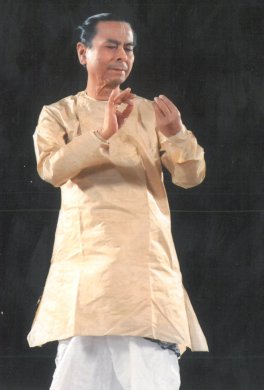 Basaksajja nayika  Khandita nayika 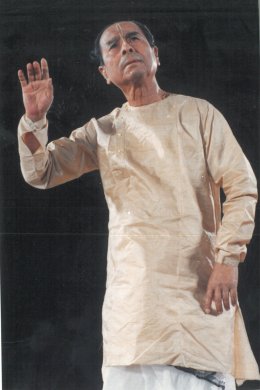 Utkanthita nayika  Bhangi Phareng In his endeavors, the Jhaveri Sisters and his other disciples have lent him support, translating his vision in the best possible manner. It is through them that the next generation to whom his technique and gharana would be passed on that his art would survive in future.  Dr. Sunil Kothari is a dance historian, scholar, author and critic and fellow, Sangeet Natak Akademi. Comments * Guru Bipin Singh who is regarded as the father of modern Manipuri dance and style belonged to Bishnupriya Manipuri community. His village is West Singari and home town is Silchar, under Cachar district in Assam. Both the Bishnupriya Manipuri and Meitei Manipuri have one common unique culture. On his birth centenary celebration at Silchar, I have published a booklet titled as 'A TALE OF TWO COMMUNITIES WITH ONE COMMON UNIQUE CULTURE' and distributed it to guests like Kalavati Devi, Darshana Jhaveri, Sanjib Bhattacharya, Jhinuk Chakrabarty and others and sent it to narthaki.com. I am happy to go through the article by respected Dr.Sunil Kothari. - Shibendra Sinha (Oct 25, 2018) Post your comments Please provide your name and email id when you use the Anonymous profile in the blog to post a comment. All appropriate comments posted with name & email id in the blog will also be featured in the site. |